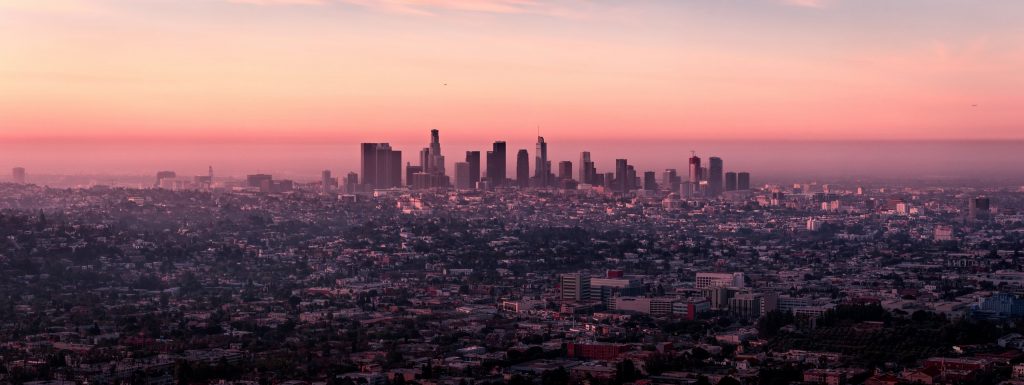California tightening diesel rules for drayage operators and emissions
- CARB requiring cleaner-burning diesel engines next year
- All port truck drivers to drive zero-emissions vehicles by 2035
- Drayage trucks to start transitioning to zero-emission technology beginning in 2024
- CARB is developing its Advanced Clean Fleets (ACF) proposal
- CARB and other Californian government groups allocated more funding to emissions reduction
California Air Resources Board (CARB) has proposed tighter environmental regulations for the state’s drayage operators that would require all port truck drivers to drive zero-emissions vehicles by 2035.
In addition to requiring cleaner-burning diesel engines next year, California Air Resources Board (CARB) has proposed tighter environmental regulations for the state’s drayage operators that would require all port truck drivers to drive zero-emissions vehicles by 2035. Drayage trucks would be required to start transitioning to zero-emission technology beginning in 2024.
In 2007, CARB adopted drayage truck regulations to manage emissions at ports, but those rules expired Dec. 31, 2022. New regulations that went into effect Jan. 1 require all trucks to have a 2010 model year engine or newer, or an engine with equivalent or better emissions control.
Advanced Clean Fleets (ACF) proposal
CARB is developing its Advanced Clean Fleets (ACF) proposal, which would update current regulations to accelerate decarbonization further. Hastening the adoption of zero-emission vehicles helps the organization meet the requirements of Governor Gavin Newsom’s September 2020 executive order that mandates drayage trucks reach zero-emission by 2035. Other medium- and heavy-duty vehicles in California are required to be zero-emissions by 2045 “for all operations where feasible,” according to the executive order.
Among the proposed rules are registration requirements in diesel drayage trucks would have to register in the CARB Online System by Dec. 31. Starting in 2024, any drayage truck intended to be used at a seaport or intermodal rail yard would be required to be zero-emissions. Active registered diesel trucks would be removed from the system once they reached 800,000 miles or their engines were 18 years or older.

Building enough charging stations is an obstacle for zero-emission vehicles, but even if there were enough charge sites, there is skepticism as to whether the electrical grid could support them. The electricity needs for a commercial vehicle charging station would be about the same as those for a small town.
Enjoying our insights?
Subscribe to our newsletter to keep up with the latest industry trends and developments.
Stay InformedLack of Charging Stations
Building enough charging stations is an obstacle for zero-emission vehicles, but even if there were enough charge sites, there is skepticism as to whether the electrical grid could support them. The electricity needs for a commercial vehicle charging station would be about the same as those for a small town. Concerns rose in September when heat waves threatened California’s grid.
“Nobody is saying we don’t want to move to advanced technology,” said Matt Schrap, chief executive of the Harbor Trucking Association, an advocacy group representing California port truckers. Truckers can’t meet the deadline due to the lack of charging infrastructure, he told the Washington Post.
Tony Brasil, chief of CARB’s transportation and clean technology branch, told the Washington Post that requiring truckers to switch to zero emission vehicles would give companies the confidence to invest in charging stations.
Funding Emissions Reduction

CARB and other Californian government groups allocated more funding to emissions reduction in order to meet the requirements outlined in Governor Newsom’s executive order.
CARB and other Californian government groups have recently allocated more funding to emissions reduction in order to meet the requirements outlined in Governor Newsom’s executive order. On Nov. 17, CARB approved its $2.6 billion Fiscal Year 2022-23 Funding Plan for Clean Transportation Incentives. About $1.7 billion will be allocated to the Hybrid and Zero-Emission Truck and Bus Voucher Incentive Project (HVIP) to subsidize and incentivize zero emission vehicles.
The California Energy Commission, on Nov. 15, 2022 approved an additional $1.4 billion to put toward the state’s emissions goals. This includes $690 million for medium and heavy-duty zero emission vehicle infrastructure, expected to power 1,150 drayage trucks, 1,000 transit buses, and 1,000 school buses.
The California Public Utilities Commission adopted a five-year, $1 billion electrification program on Nov. 17. Seventy percent of the funds will go toward medium and heavy-duty zero-emission vehicles charging.




















